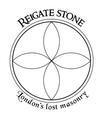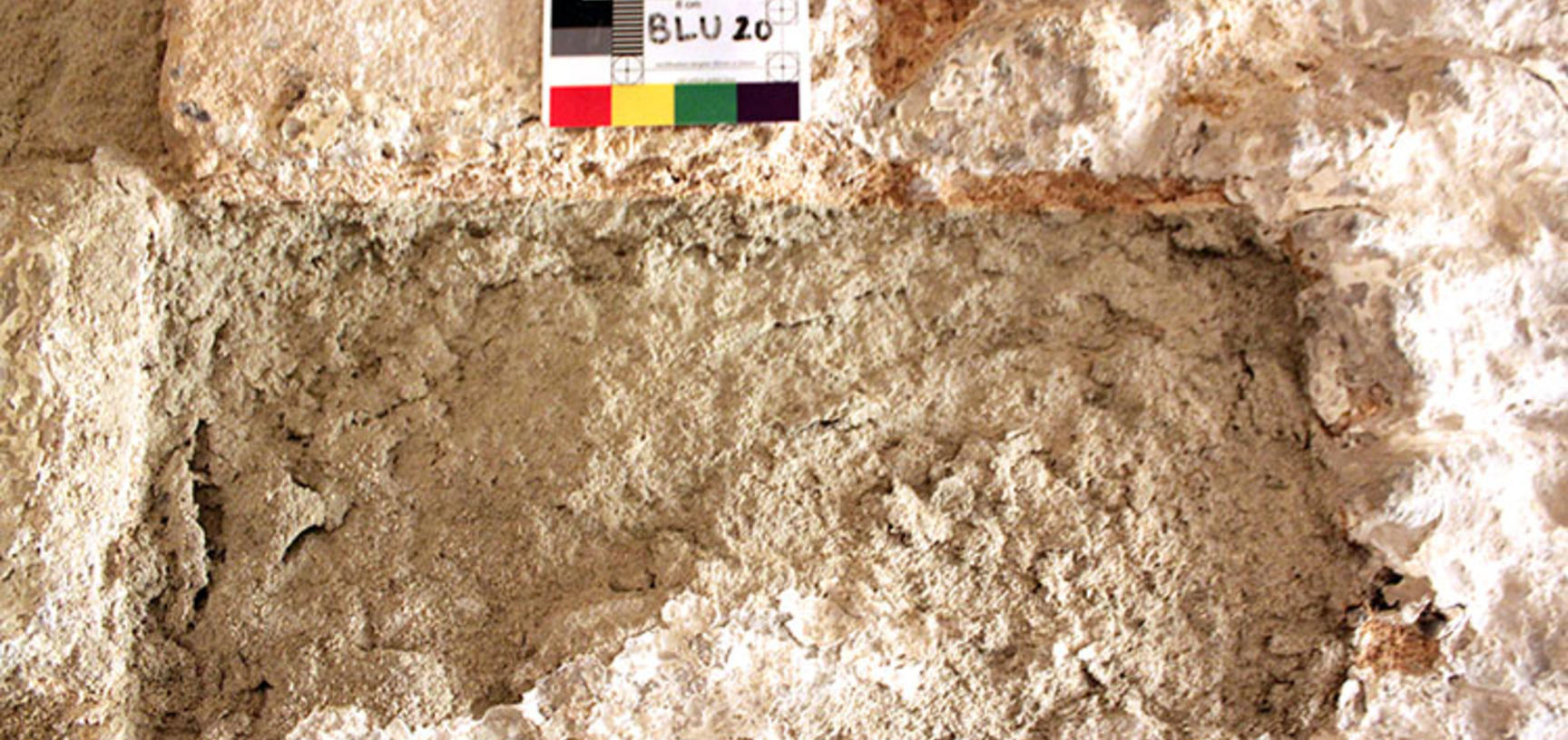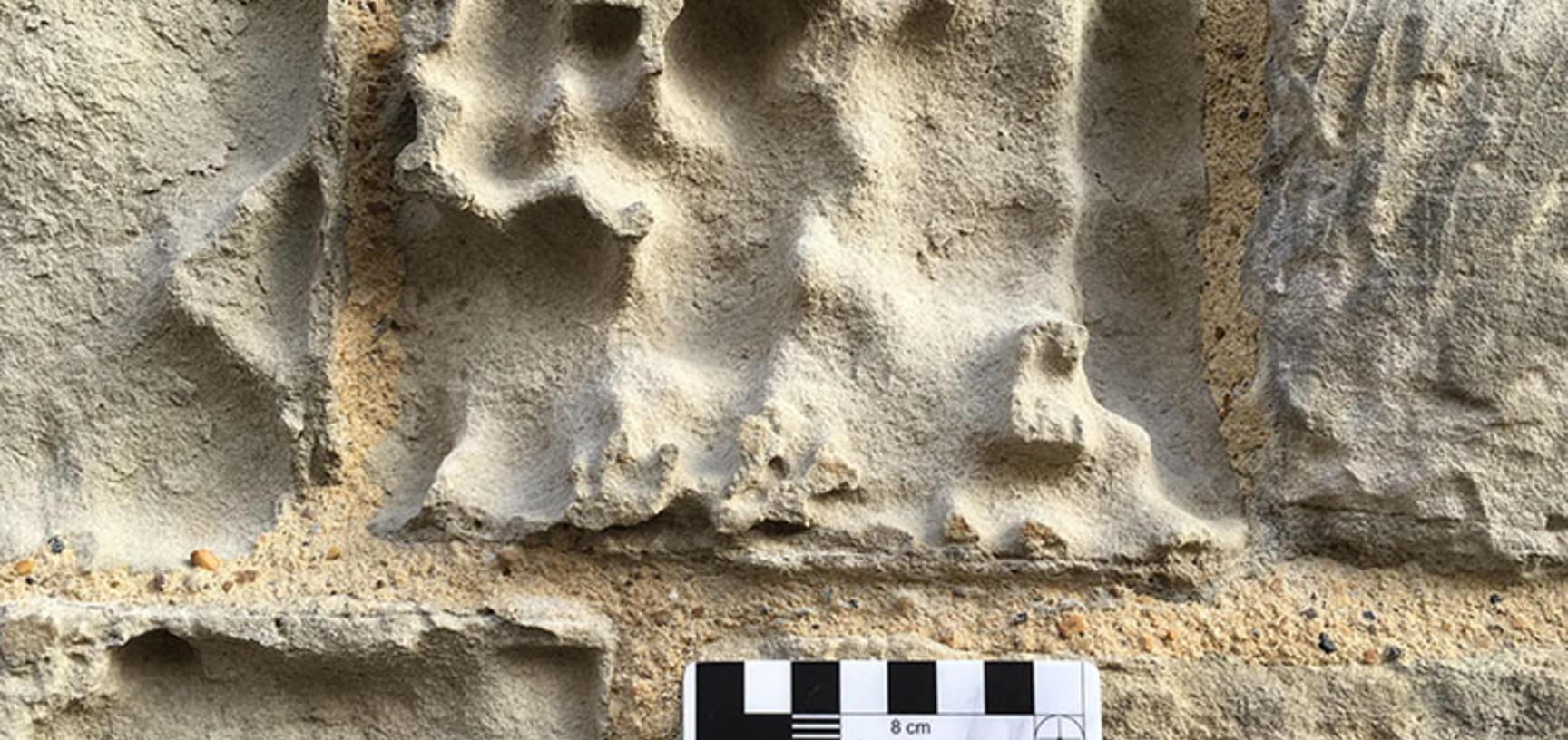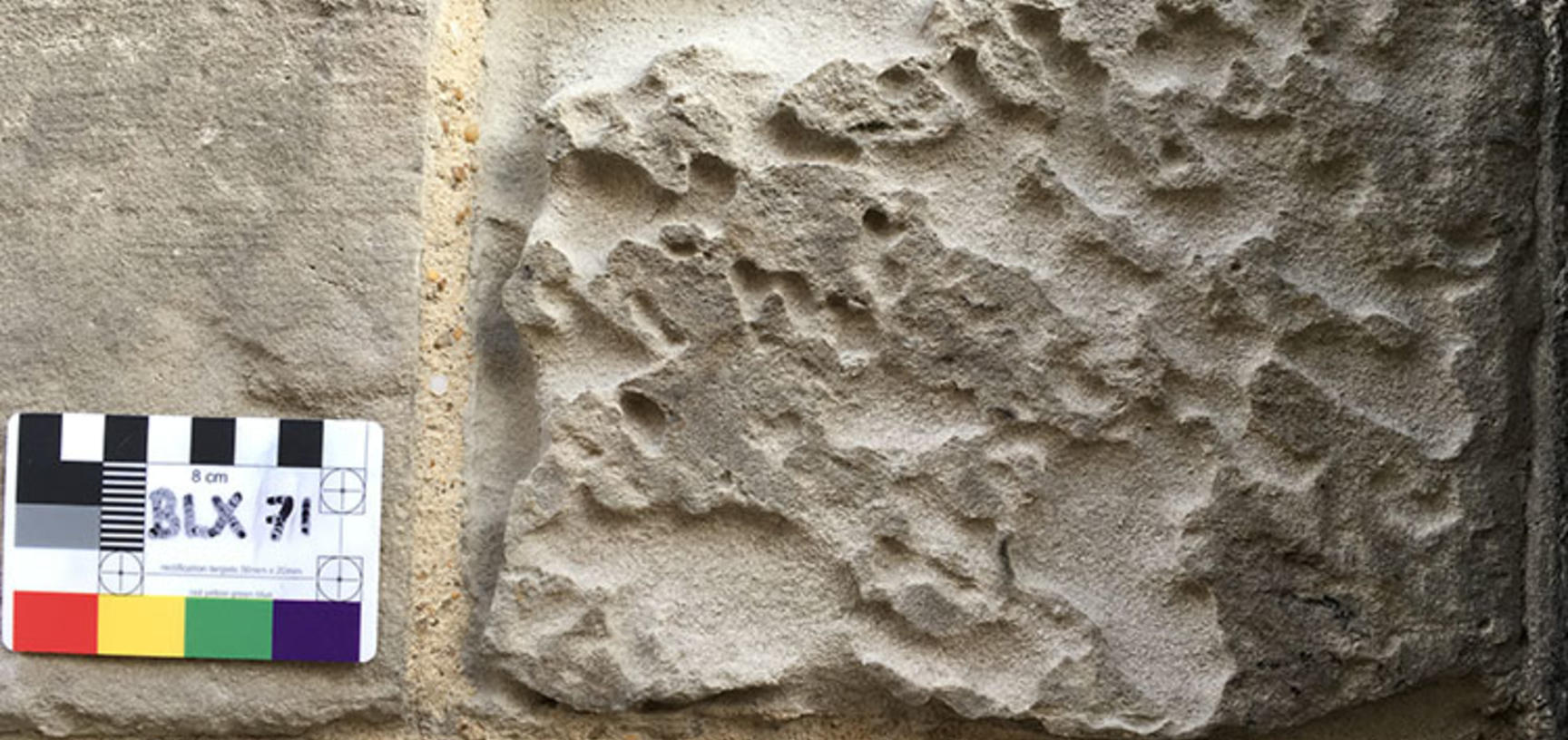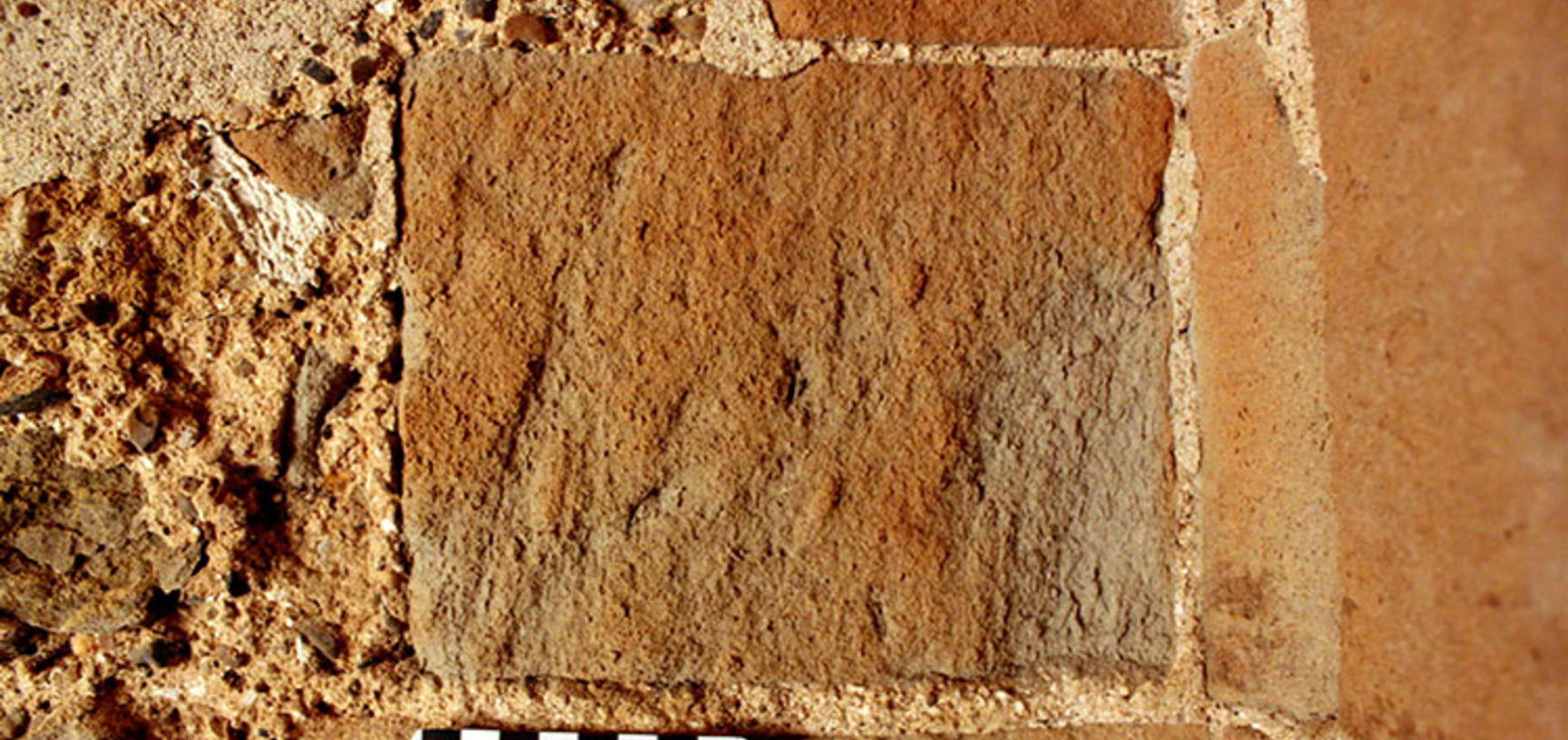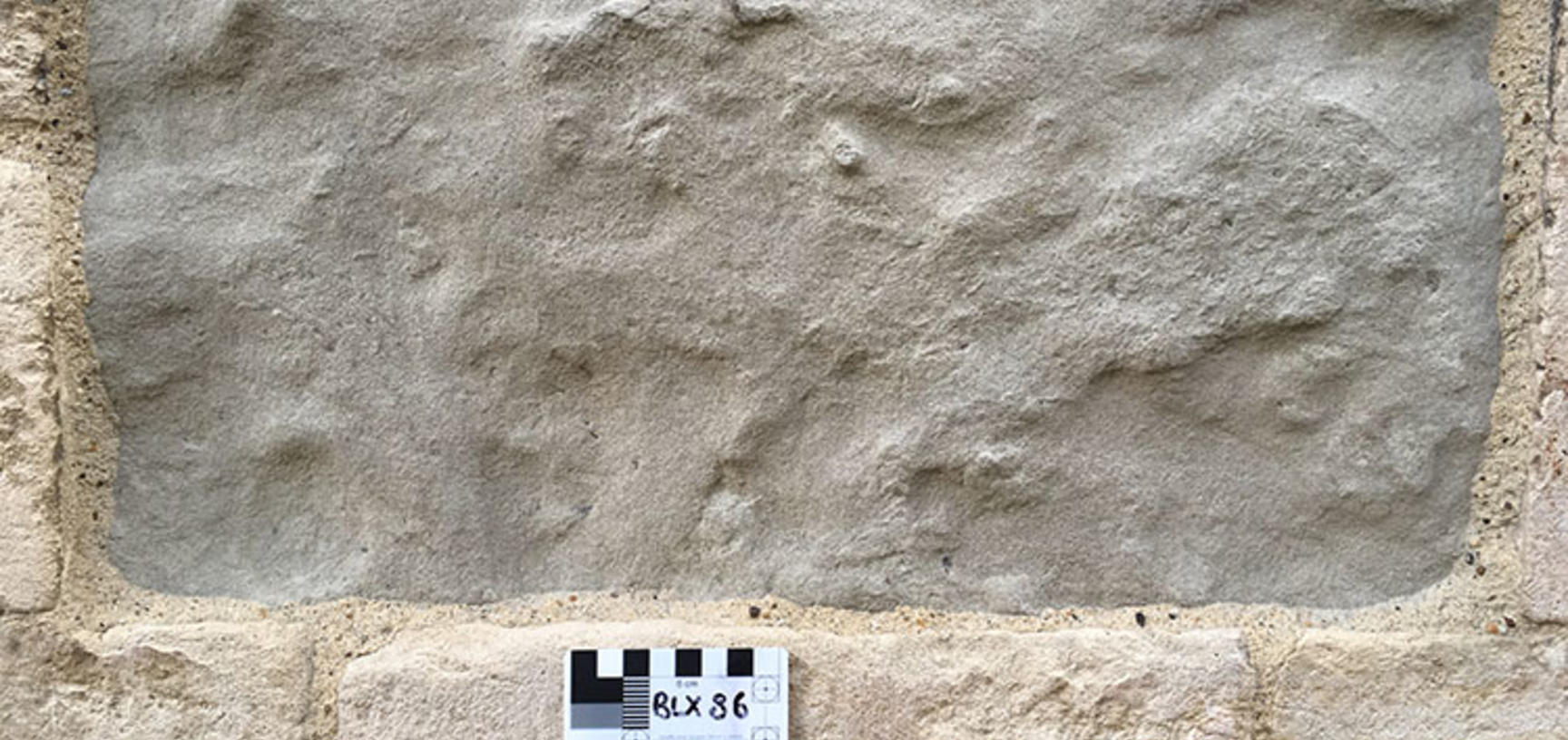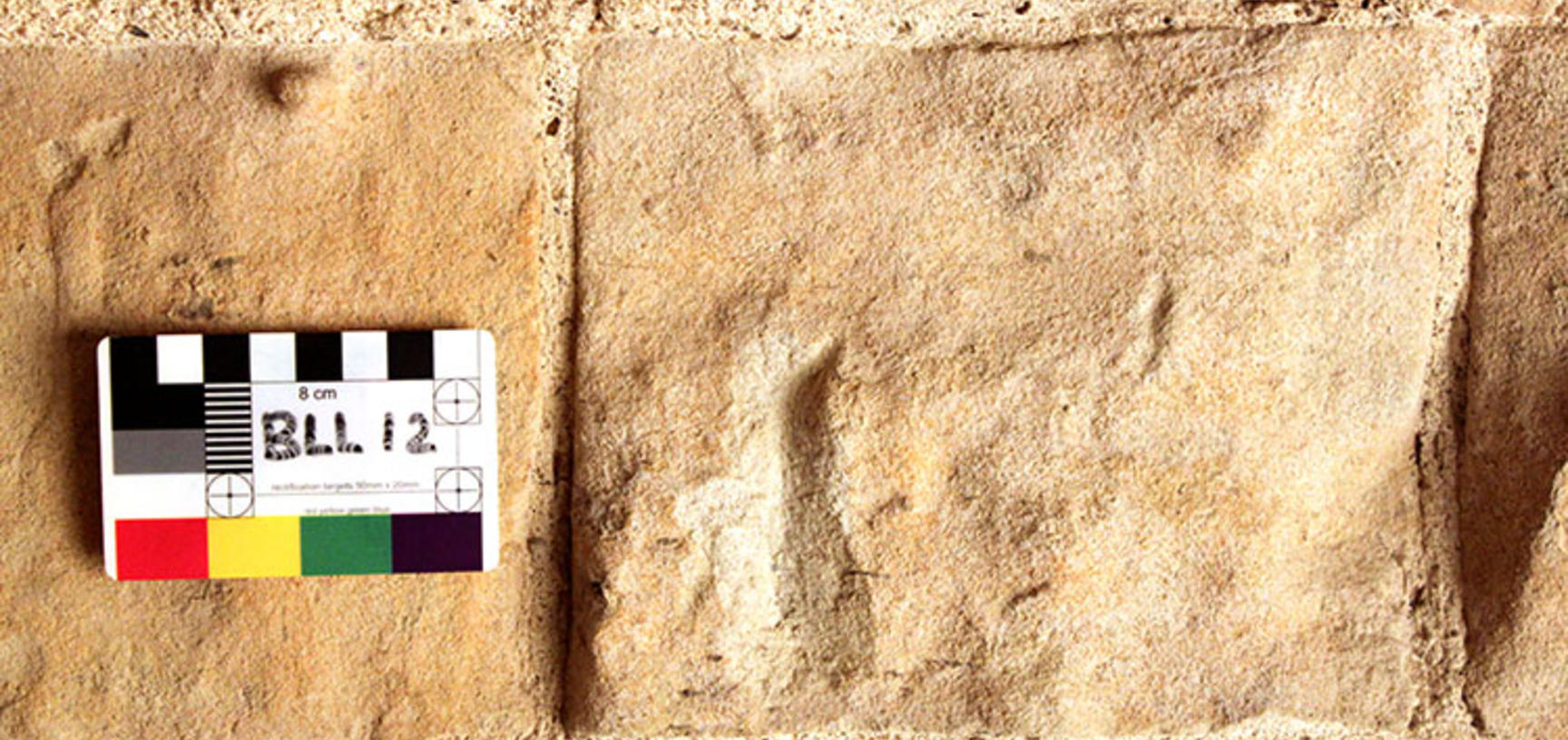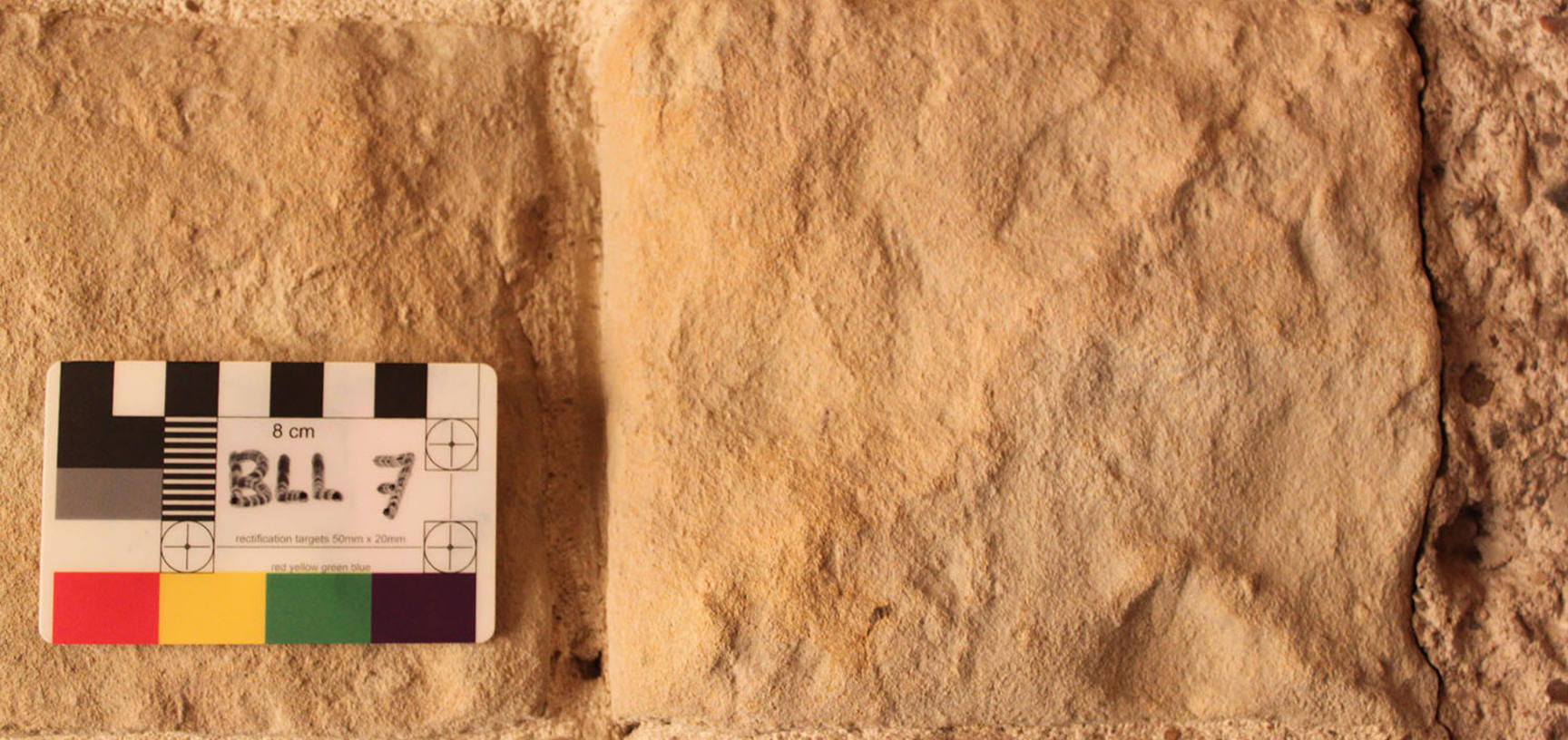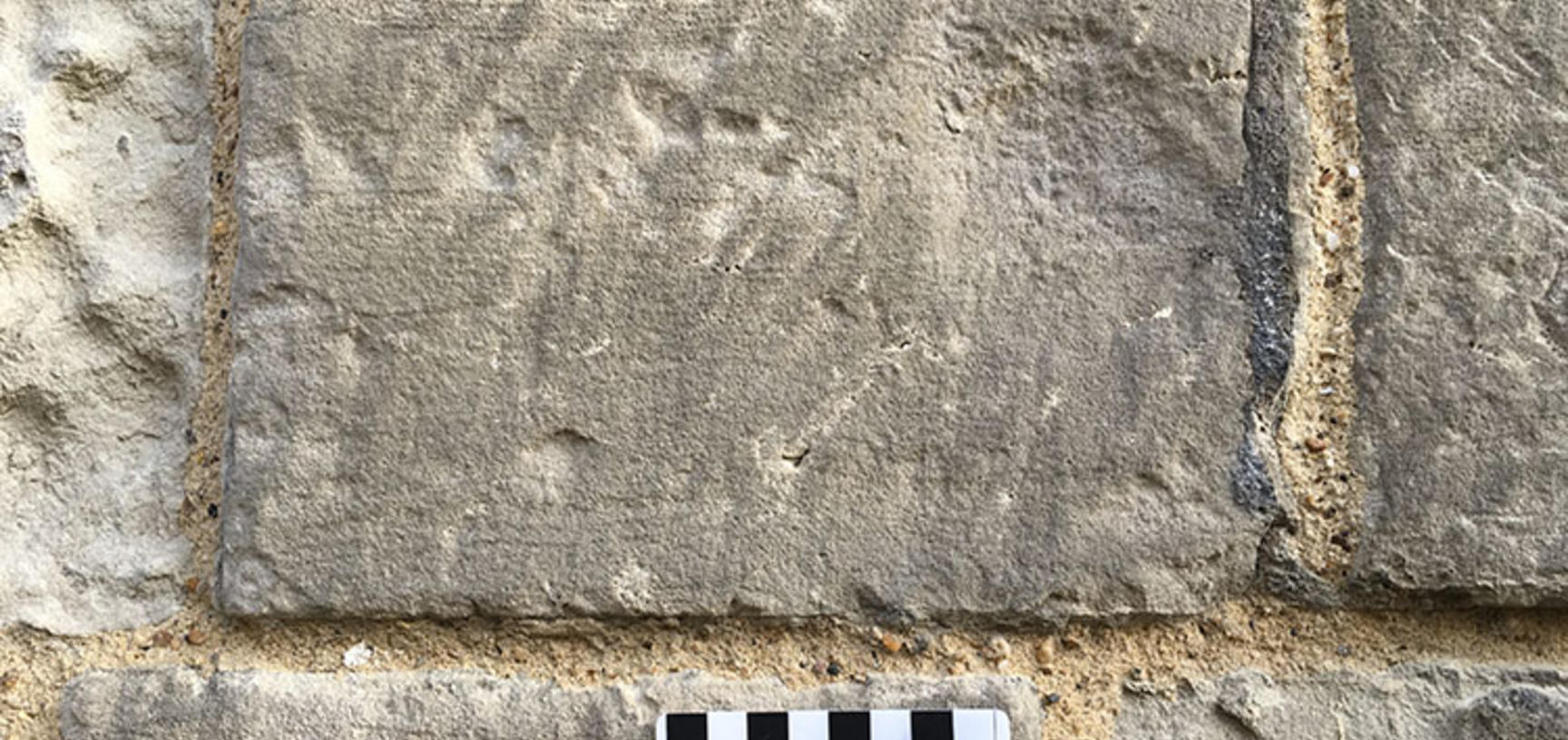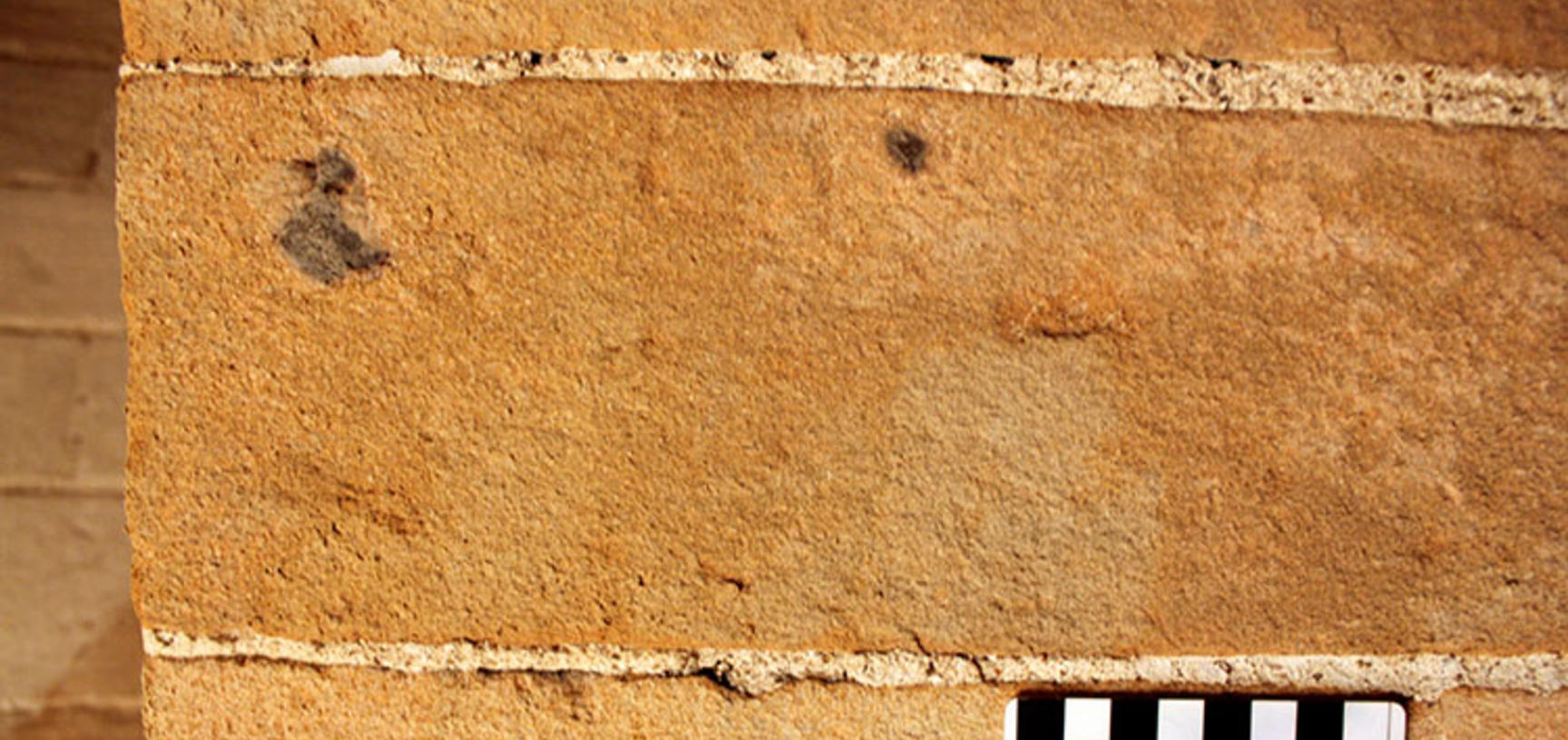Disintegration (powdering)
Occurence and appearance
Disintegration refers to the detachment of single grains or small aggregates of grains. In Reigate Stone it often occurs in, but is not exclusive to damp, sheltered areas.
It can also be observed on stone surface which has recently been exposed, for example due to a loss of crust or plaster, or the detachment of a large flake. There is some indication that it is more common in clay bearing subtypes.
As Reigate Stone is fine grained, it can be helpful to use the term powdering. Excessive powdering leads to erosion. In stone with remnants of a harder outer surface or crust this can form pronounced coving or alveolization of the stone surface.
Condition assessment
| Score |
Coverage (affected units in an area) |
Severity (worst affected unit) |
|---|---|---|
| 1 |
There is no powdering in this area of masonry. |
Isolated parts of the stone show signs of powdering, but the shape and volume of the stone is largely intact. The detachment does not appear to be recent, or if it is recent it is insignificant. |
| 2 |
Isolated stones are showing signs of powdering. |
There are signs of powdering across the stone surface, resulting in noticeable erosion, but the surface is sound, and the process does not appear to be aggressively active. |
| 3 |
Up to half of the stones in this area of masonry are showing signs of powdering. |
There are signs of active, aggressive powdering in parts of the stone. The stone surface in these areas lacks cohesion. This process is resulting in active loss of material. |
| 4 |
More than half of the stones in this area of masonry are showing signs of powdering. |
There are signs of active, aggressive powdering across much of the stone surface, which lacks cohesion. This process is resulting in active loss of material. |
Previous page (Detachment)
Next page (Scaling)

